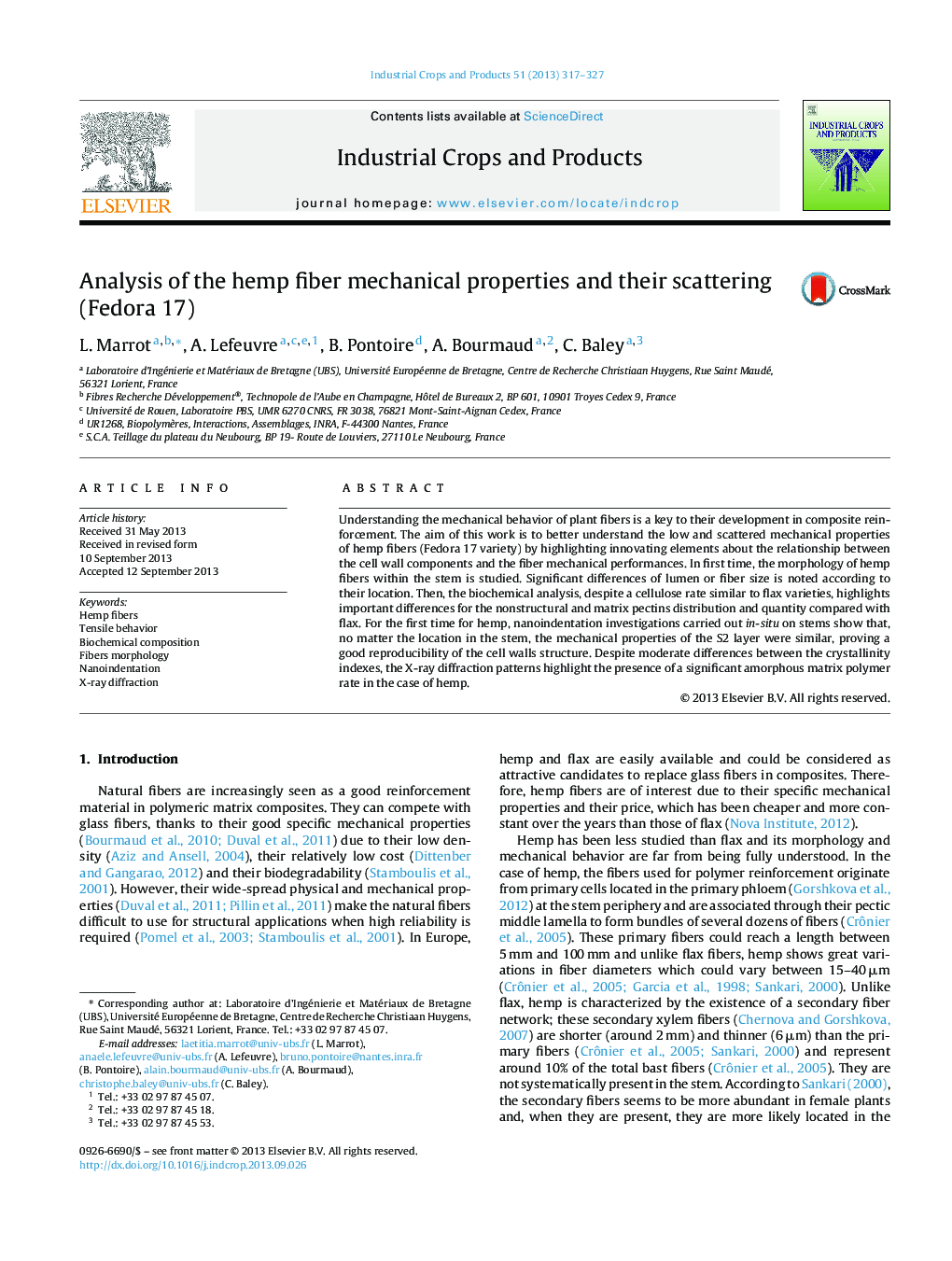| Article ID | Journal | Published Year | Pages | File Type |
|---|---|---|---|---|
| 6377209 | Industrial Crops and Products | 2013 | 11 Pages |
â¢We investigate the mechanical properties of hemp fibers (Fedora 17 variety).â¢Significant differences of morphology were highlighted.â¢Biochemical analysis evidences, comparing with flax fiber, important differences for the nonstructural and matrix pectins distribution and quantity.â¢Nanoindentation investigations show that, no matter the location in the stem, the mechanical properties of the S2 layer were similar.â¢X-ray diffraction analysis highlights the presence of a significant amorphous matrix polymer rate.
Understanding the mechanical behavior of plant fibers is a key to their development in composite reinforcement. The aim of this work is to better understand the low and scattered mechanical properties of hemp fibers (Fedora 17 variety) by highlighting innovating elements about the relationship between the cell wall components and the fiber mechanical performances. In first time, the morphology of hemp fibers within the stem is studied. Significant differences of lumen or fiber size is noted according to their location. Then, the biochemical analysis, despite a cellulose rate similar to flax varieties, highlights important differences for the nonstructural and matrix pectins distribution and quantity compared with flax. For the first time for hemp, nanoindentation investigations carried out in-situ on stems show that, no matter the location in the stem, the mechanical properties of the S2 layer were similar, proving a good reproducibility of the cell walls structure. Despite moderate differences between the crystallinity indexes, the X-ray diffraction patterns highlight the presence of a significant amorphous matrix polymer rate in the case of hemp.
